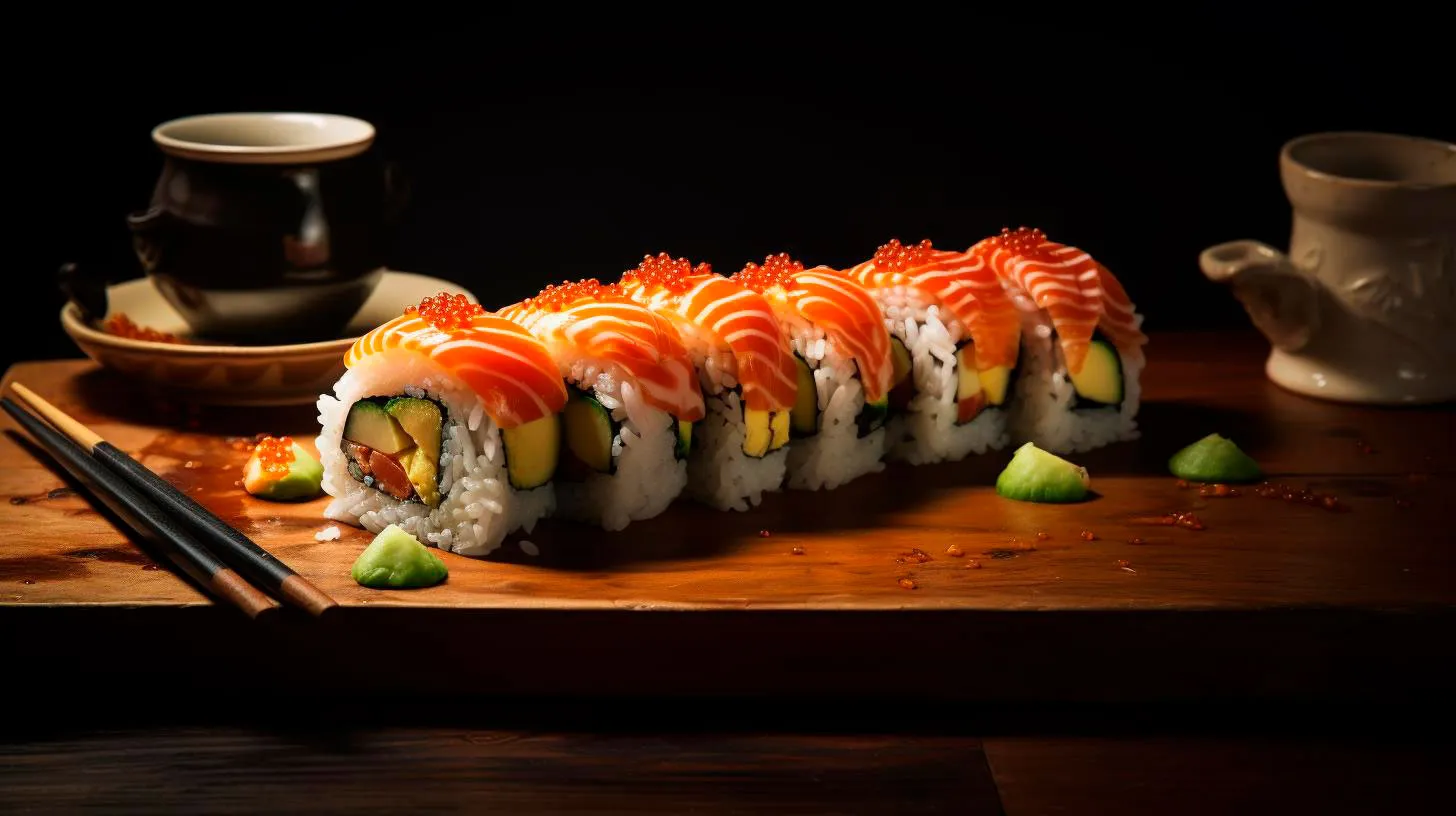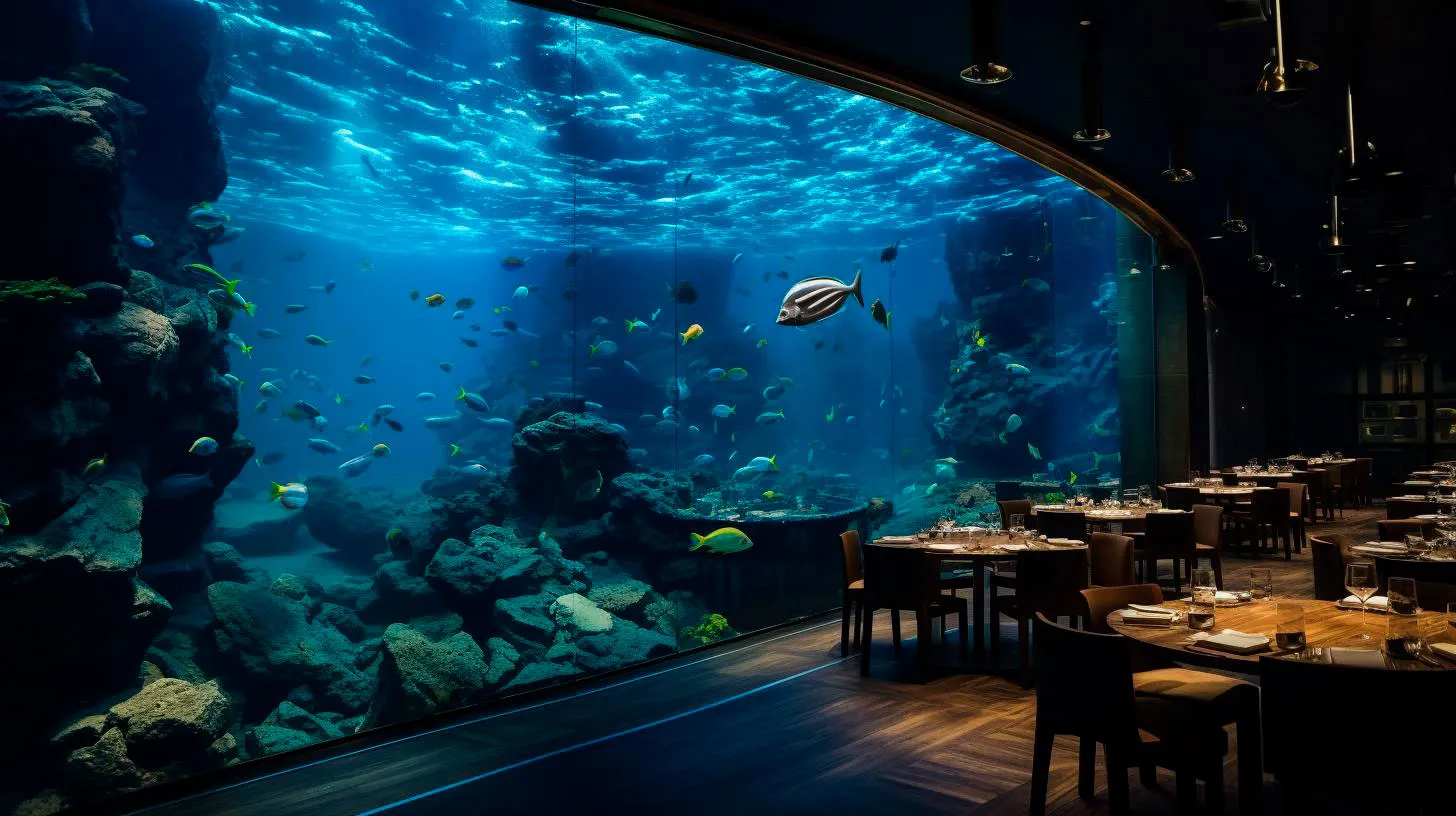From Sea to Plate: Promoting Responsible Fishing Practices
The Impact of Unsustainable Fishing
Unsustainable fishing practices, such as overfishing and destructive fishing methods, pose a severe threat to marine biodiversity and ecosystems. Let’s take a closer look at the consequences:
- Declining Fish Stocks: According to the Food and Agriculture Organization (FAO), nearly 90% of the world’s fish stocks are either fully exploited, overexploited, or depleted.
- Imbalanced Ecosystems: Overfishing disrupts the delicate balance within marine ecosystems, leading to population declines of certain species and impacting the food chain.
- Threat to Coastal Communities: Many coastal communities depend on fishing for their livelihoods. Unsustainable fishing practices can jeopardize these communities’ socio-economic stability and food security.
The Importance of Responsible Fishing Practices
To address the challenges posed by unsustainable fishing, responsible fishing practices are crucial. Not only do they promote the long-term sustainability of fish stocks, but they also ensure the overall health of marine ecosystems.
Let’s explore the key benefits and practices associated with responsible fishing:
1. Sustainable Fishing:
By adopting sustainable fishing practices, we can prevent overfishing and allow fish populations to replenish. Here are a few methods used:
- Quotas and Catch Limits: Setting catch limits based on scientific research helps prevent excessive fishing and allows stocks to regenerate.
- Protected Areas: Designating marine protected areas allows fish to spawn and grow, enhancing overall sustainability.
- Selective Fishing Gear: Implementing selective fishing gear minimizes bycatch (unwanted fish or marine species) and reduces damage to non-target species and habitats.
2. Traceability and Certification:
One of the significant advancements in the fishing industry is the implementation of traceability and certification systems. These systems allow consumers to make informed decisions by knowing the origin and sustainability of seafood products. Features of traceability and certification include:
- Labels and Certifications: Certifications, such as the Marine Stewardship Council (MSC) label, indicate that the seafood product has met specific sustainability criteria.
- Supply Chain Transparency: Tracking the journey of seafood from sea to plate ensures that it has been sourced legally and sustainably.
- Consumer Awareness: Increasing consumer education about sustainable seafood choices empowers individuals to support responsible fishing practices.
The Role of Technology
Technology plays a significant role in promoting responsible fishing practices. Here are some innovative solutions that are transforming the fishing industry:
- Remote Sensing: Satellite imagery and remote sensing technologies help identify and monitor illegal fishing activities, enabling authorities to take immediate action.
- Blockchain: Blockchain technology brings transparency to the seafood supply chain by creating an immutable record of every transaction, reducing the risk of fraud and ensuring traceability.
- Smart Fishing Gear: Incorporating sensors and data analytics into fishing gear allows fishermen to make informed decisions, reducing bycatch and optimizing fishing practices.
The Urgency for Collaboration
Addressing the challenges faced by our oceans requires collaboration from all stakeholders, including governments, fishing industry players, conservation organizations, and consumers. Key takeaways from this article include:
- Unsustainable fishing practices have led to declining fish stocks and imbalanced ecosystems.
- Responsible fishing practices ensure the long-term sustainability of fish stocks and support marine ecosystems.
- Traceability and certification systems provide transparency to consumers and encourage sustainable seafood choices.
- Technological innovations play a crucial role in promoting responsible fishing practices.
- A collaborative effort between stakeholders is necessary to secure the future of our oceans.
In conclusion, it is essential to adopt responsible fishing practices to tackle the threats posed by unsustainable fishing. By ensuring the long-term sustainability of fish stocks and preserving marine ecosystems, we can safeguard the delicate balance of our oceans and continue to enjoy the benefits they provide.
Ocean Conservation: How the Future of Sushi Depends on It
In this article, we will explore how the future of sushi is intrinsically tied to the conservation of our oceans and why it is crucial to prioritize sustainable seafood practices.
The Impact of Overfishing on Ocean Ecosystems
Overfishing, the practice of depleting fish stocks at an unsustainable rate, poses a significant threat to ocean ecosystems. Here are some key points to consider:
- According to the Food and Agriculture Organization (FAO) of the United Nations, over 33% of global fish stocks are currently overfished.
- This imbalance in marine ecosystems can lead to the collapse of fish populations, disrupting the natural food chain and damaging habitats.
- The loss of key species can have cascading effects on other marine life, including seabirds, marine mammals, and coral reefs.
Adopting Sustainable Fishing Practices
To ensure the long-term viability of sushi and other seafood, it is essential to embrace sustainable fishing practices. These practices aim to minimize environmental impact while supporting the livelihoods of fishing communities. Here’s what you need to know:
- Fisheries management: Effective management strategies, such as catch limits and fishing quotas, help in maintaining fish populations at sustainable levels. These measures ensure the replenishment of fish stocks and the conservation of vulnerable species.
- Regulation and enforcement: Governments and international organizations play a crucial role in implementing and enforcing regulations to prevent illegal, unreported, and unregulated fishing. These actions deter destructive fishing practices and promote responsible harvesting.
- Traceability and labeling: Transparent seafood supply chains, labeling programs, and certifications, such as the Marine Stewardship Council (MSC) and Aquaculture Stewardship Council (ASC), allow consumers to make informed choices by identifying sustainably sourced seafood.
The Rise of Sustainable Sushi
The sushi industry has begun to recognize the importance of sustainability and conservation. Restaurants and seafood suppliers are embracing eco-friendly practices to meet the growing demand for sustainable sushi options. Here are some notable trends:
- Responsibly sourced seafood: Sushi establishments are partnering with fisheries that prioritize sustainable practices, ensuring the availability of seafood without compromising the health of our oceans.
- Aquaculture innovation: The growth of responsible fish farming, known as aquaculture, plays a significant role in supplying sustainable seafood. Farmed fish, when done right, can reduce pressure on wild fish populations and allow them to recover.
- Consumer education: Sushi chefs and restaurants are actively educating their customers about sustainable seafood choices. They provide information about the environmental impact of various species, empowering individuals to make informed decisions.
The Benefits of Ocean Conservation
Protecting our oceans and practicing sustainable seafood consumption provides several benefits:
- Biodiversity preservation: By safeguarding marine ecosystems, we protect the immense biodiversity that resides in our oceans.
- Ecological balance: Promoting sustainable fishing practices helps restore natural food chains and ensures the overall health of marine environments.
- Climate change mitigation: Healthy oceans act as carbon sinks, absorbing and storing large amounts of carbon dioxide. Preserving them is vital in the fight against climate change.
- Economic stability: Sustainable fishing practices support the livelihoods of millions of people worldwide who depend on the fishing industry.
- Future generations: Protecting the oceans today ensures that future generations can also enjoy the benefits they provide, including sustainable sushi.
Key Takeaways
Sushi, a beloved culinary art form, faces a critical juncture in its future due to the impact of overfishing and environmental degradation. By prioritizing sustainable seafood practices and embracing ocean conservation, we can safeguard the availability of sushi and protect the health of our oceans. Remember these key points:
- Overfishing depletes fish stocks, disrupts ecosystems, and threatens the future of sushi.
- Sustainable fishing practices include effective fisheries management, regulation, and traceability.
- The sushi industry is embracing responsibility, promoting sustainable sourcing, and educating consumers.
- Ocean conservation benefits biodiversity, ecological balance, climate change mitigation, and economies.
Let us unite in our efforts to preserve our oceans and ensure a sustainable future for sushi and the many wonders our seas hold.
The Art of Sushi: Balancing Tradition with Environmental Consciousness
However, as sushi continues to gain popularity, there is also a growing concern about the environmental impact of this beloved delicacy. In this article, we will explore how sushi chefs and consumers alike are striving to balance tradition with environmental consciousness.
The Tradition of Sushi
Sushi dates back to the 8th century in Japan, where it originated as a method of preserving fish by fermenting it with rice. Over time, sushi evolved into the art form we know today, characterized by the use of fresh, high-quality ingredients and meticulous preparation techniques. Sushi chefs undergo years of rigorous training to master the delicate art of sushi-making, honing their skills in rice preparation, fish selection, and knife techniques.
The Environmental Impact of Sushi
While sushi is undoubtedly delicious, its popularity has led to various environmental concerns. Here are some of the key challenges associated with sushi consumption:
- Overfishing: High demand for sushi has put immense pressure on fish populations, leading to overfishing and depletion of certain species.
- Inefficient fishing practices: Traditional fishing methods such as trawling can result in significant bycatch, causing harm to other marine species.
- Carbon footprint: Sushi often involves the transportation of ingredients from different parts of the world, contributing to greenhouse gas emissions.
- Single-use packaging: Takeout sushi is often packaged in single-use plastics, adding to the global plastic waste problem.
Strategies for Environmental Consciousness
In recent years, both sushi chefs and consumers have taken steps to address these environmental challenges. Here are some notable initiatives:
Sustainable Sourcing
Sushi restaurants are increasingly sourcing their fish from sustainable suppliers. These suppliers employ responsible fishing practices and adhere to strict guidelines to ensure the long-term viability of fish populations. By choosing sustainably caught fish, sushi chefs can support conservation efforts and help protect vulnerable marine ecosystems.
Alternative Ingredients
To reduce reliance on overfished species, sushi chefs are exploring alternative ingredients. This includes incorporating sustainable seafood options such as farmed fish, which can help alleviate pressure on wild fish stocks. Additionally, plant-based alternatives like tofu, mushrooms, and seaweed are being creatively used to offer unique sushi experiences while reducing environmental impact.
Reducing Food Waste
Efforts are being made to minimize food waste in sushi restaurants. Chefs strive to use every part of the fish, creatively using lesser-known cuts and scraps to create innovative sushi dishes. By reducing waste, they not only cut down on environmental impact but also showcase the versatility of sushi as a culinary art.
Plastic-Free Packaging
Many sushi restaurants are ditching single-use plastics and opting for eco-friendly packaging alternatives. Biodegradable containers, reusable bento boxes, and compostable utensils are some of the ways sushi establishments are minimizing their carbon footprint and addressing the plastic waste issue.
Key Takeaways
Sushi is not just a culinary delight but also a reflection of cultural heritage. As its popularity grows, it is essential to ensure that sushi remains sustainable and environmentally conscious. By adopting strategies such as sustainable sourcing, exploring alternative ingredients, reducing food waste, and embracing plastic-free packaging, sushi chefs and consumers can make a positive impact on the environment while still enjoying this revered delicacy.
Key takeaways from this article:
- Sushi is a traditional Japanese dish that has gained worldwide popularity.
- Environmental concerns associated with sushi include overfishing, inefficient fishing practices, carbon footprint, and single-use packaging.
- Sushi chefs and consumers are adopting strategies like sustainable sourcing, alternative ingredients, reducing food waste, and plastic-free packaging to address these concerns.
- By balancing tradition with environmental consciousness, sushi can be enjoyed in a sustainable and responsible manner.
Sustainable Seafood Revolutionizing the Sushi Industry
With over 2 million tons of seafood consumed each year in sushi alone, the need for sustainable seafood has become more pressing than ever before.
The Dark Side of Sushi
While sushi offers a delightful culinary experience, its production has not always been environmentally friendly. Overfishing has been a major concern, leading to the depletion of many fish populations and harmful disruption to marine ecosystems. Additionally, farmed seafood has often been associated with pollution and the use of antibiotics and pesticides.
However, the sushi industry is starting to recognize the need for change. Sustainable seafood practices are revolutionizing the sushi industry, ensuring a more responsible and eco-friendly approach to sushi production.
Embracing Sustainable Seafood
Thanks to advancements in technology and a growing awareness of environmental issues, the sushi industry is making significant strides towards sustainability. Here are some key initiatives driving the sustainable seafood revolution:
- 1. Traceability: Sushi restaurants and seafood suppliers are increasingly implementing traceability systems to ensure transparency in the supply chain. This allows consumers to know exactly where their seafood comes from and make informed choices.
- 2. Certified Fisheries: Numerous organizations, such as the Marine Stewardship Council (MSC), are providing certifications for sustainable fisheries. These certifications help sushi restaurants and consumers identify seafood that has been responsibly caught.
- 3. Aquaculture Innovation: The growth of sustainable aquaculture practices is reducing the reliance on wild-caught seafood. Responsible fish farming techniques minimize environmental impact and ensure the availability of seafood for future generations.
- 4. Alternative Ingredients: Sushi chefs are becoming more creative in their ingredient choices, incorporating sustainable options such as plant-based proteins, seaweed, and even insects. These alternatives offer a delicious and eco-friendly twist to traditional sushi rolls.
- 5. Consumer Demand: As consumers become increasingly conscious of the environmental impact of their food choices, there is a growing demand for sustainable sushi. This demand is driving sushi restaurants to prioritize sustainability in their sourcing practices.
The Benefits of Sustainable Seafood
The shift towards sustainable seafood in the sushi industry brings about several important benefits:
- Preservation of Marine Ecosystems: By promoting responsible fishing and aquaculture practices, sustainable seafood helps preserve marine ecosystems, maintaining biodiversity and protecting vulnerable species.
- Reduced Environmental Impact: Sustainable seafood practices minimize pollution, habitat destruction, and the need for excessive antibiotic and pesticide use, resulting in a significantly reduced environmental impact.
- Positive Industry Reputation: Sushi restaurants and seafood suppliers that prioritize sustainability earn a positive reputation among environmentally conscious consumers. This can lead to increased customer loyalty and support.
- Long-term Economic Viability: By embracing sustainability, the sushi industry ensures the long-term availability of seafood, supporting livelihoods and economic growth in coastal communities.
The Key Takeaway
The sushi industry is undergoing a transformative journey towards sustainability. Through traceability, certified fisheries, aquaculture innovation, alternative ingredients, and increased consumer demand, sushi restaurants and seafood suppliers are revolutionizing the industry’s approach to seafood sourcing.
Sustainable seafood practices not only benefit the environment but also contribute to the longevity and success of the sushi industry. By embracing sustainability, we can continue to enjoy this beloved culinary delight while ensuring the preservation of our oceans for generations to come.



